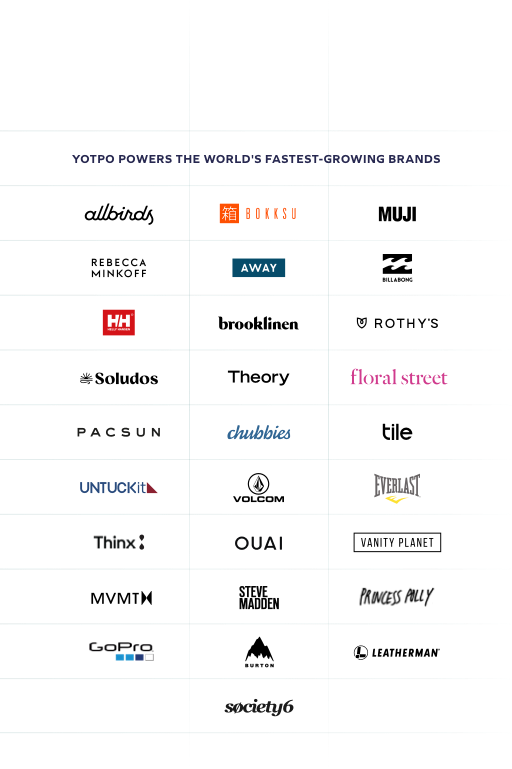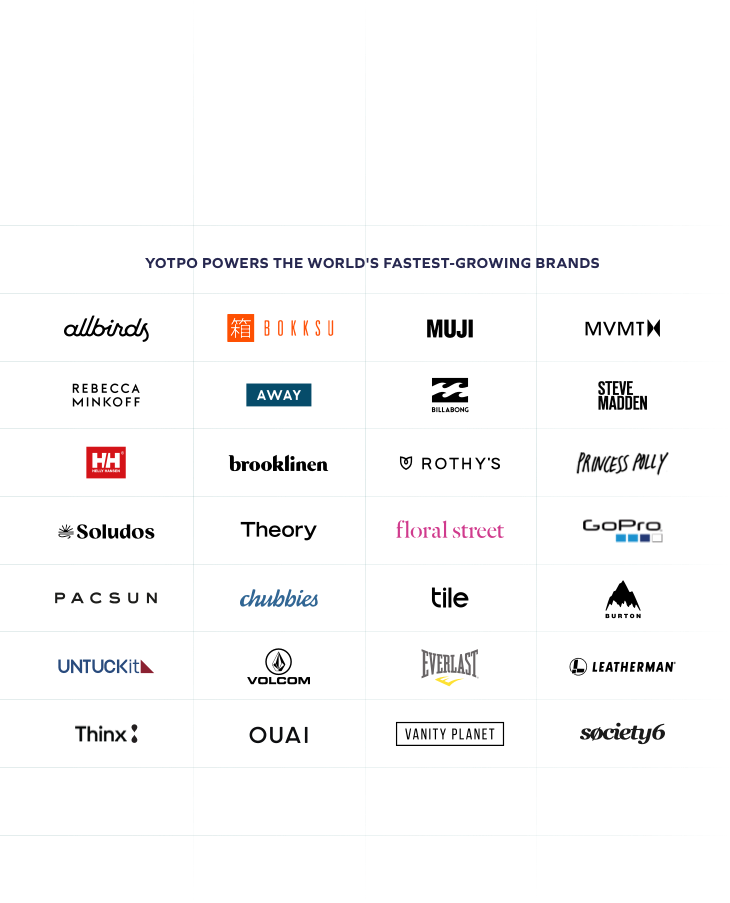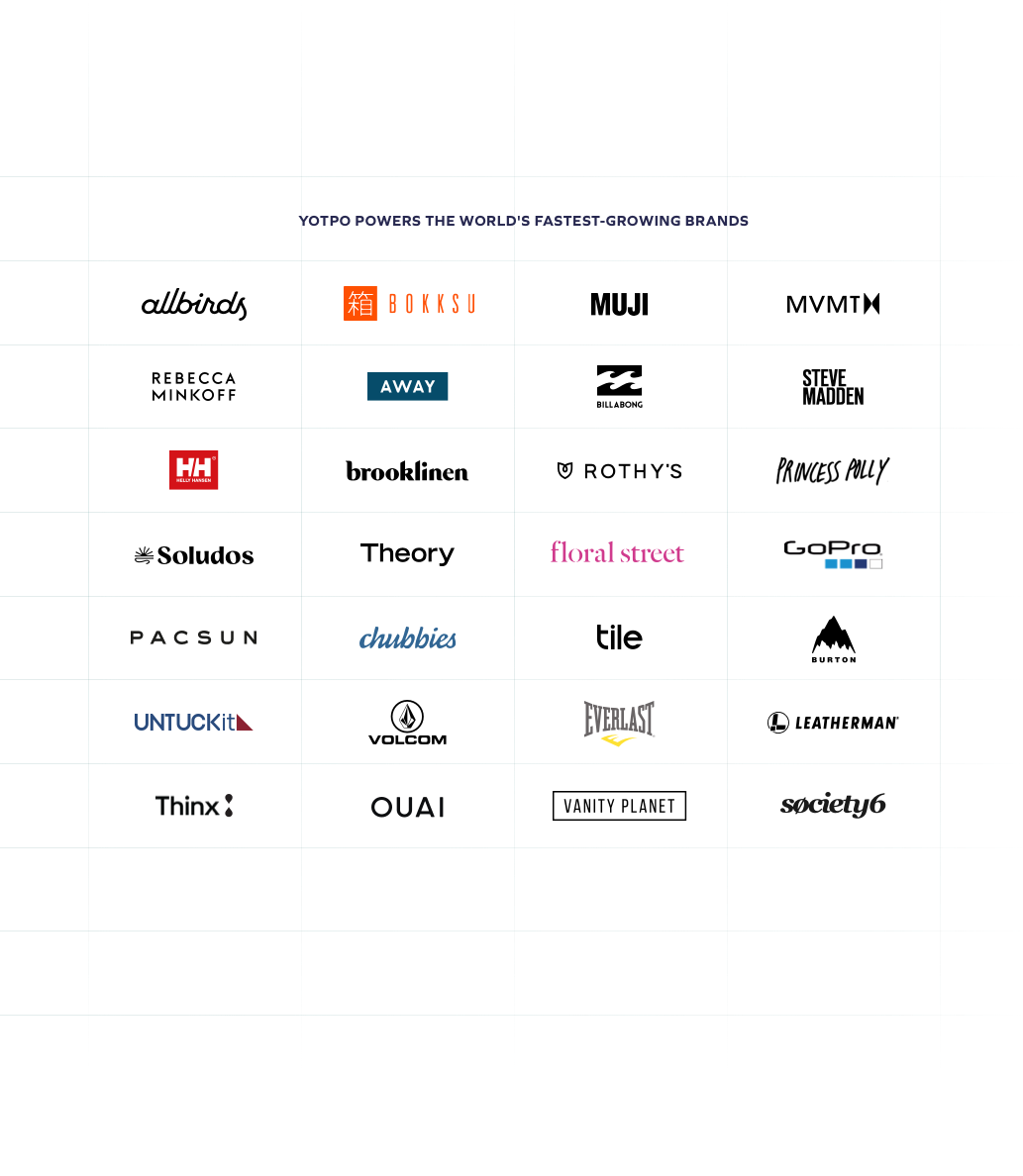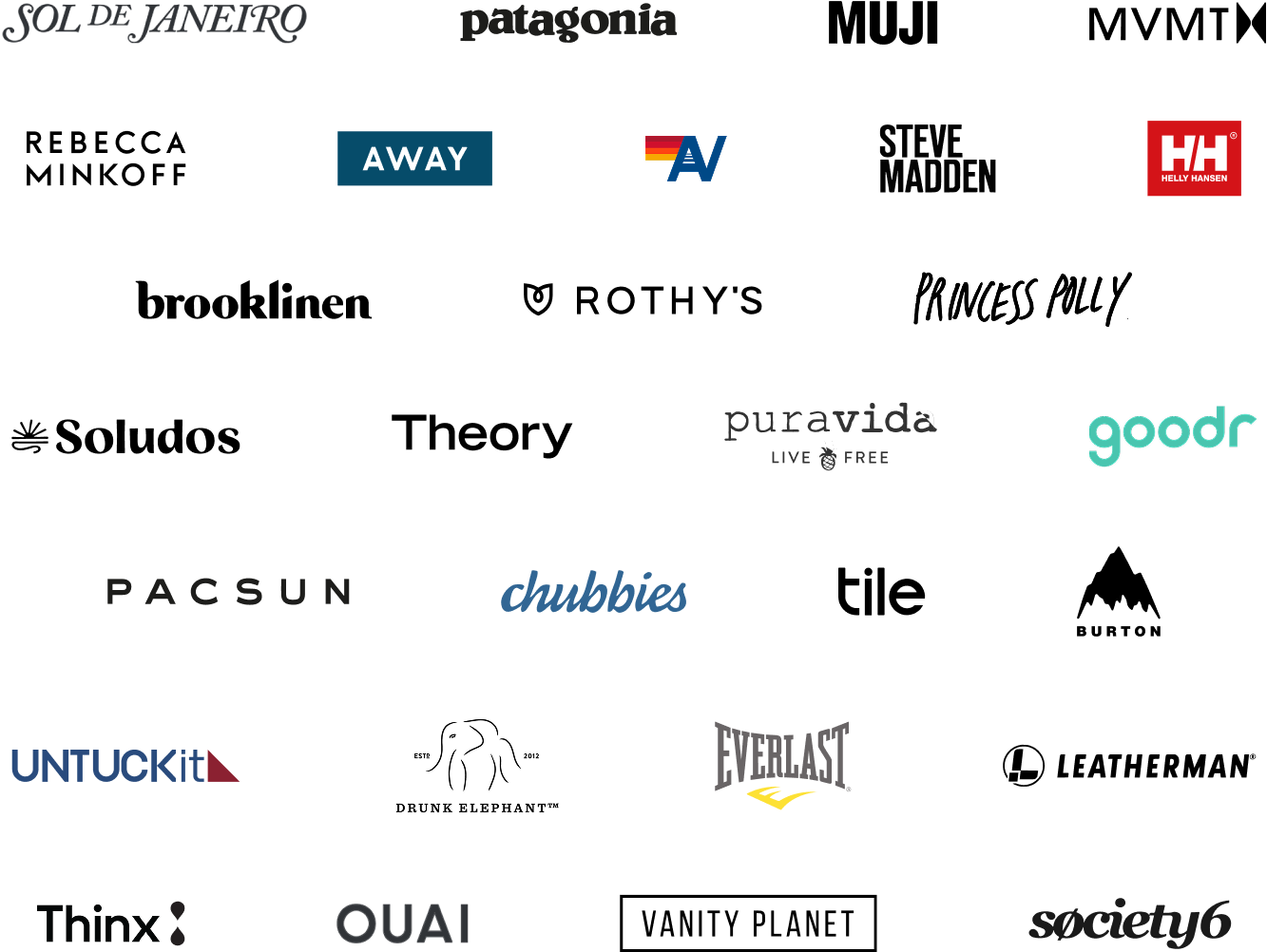Conversion rate optimization is a key driver of eCommerce growth, where even small improvements can lead to significant revenue gains. The average eCommerce conversion rate in the United States ranges between 2.5% and 3%. Even a small increase in conversion rate can translate to substantial revenue growth, especially at scale.
But what does this mean for you? If you’re growing an eCommerce brand, it means that optimizing the customer journey is essential. Think about the last time you made an online purchase. Chances are, you didn’t buy instantly. You likely researched the product, read reviews, and browsed the brand’s website before making a decision.
Without realizing it, you moved through an eCommerce marketing funnel—a structured journey designed to turn interest into a purchase. Every touchpoint you encountered was strategically placed to guide you toward conversion.
In this article, we’ll break down the eCommerce marketing funnel and why it’s crucial for your brand.
What Is an eCommerce Marketing Funnel?
An eCommerce marketing funnel visually represents the journey potential customers take when interacting with a brand’s website. It outlines each stage of engagement, from initial awareness to making a purchase, helping brands understand how visitors navigate their path to conversion.
The funnel is typically cone-shaped, with a broad top representing all website visitors and a narrow bottom representing paying customers. As prospects move through the funnel, strategic marketing efforts guide them toward a purchase.
It’s important to note that an eCommerce marketing funnel is a concept rather than a fixed strategy. Brands use it to track and categorize website visitors based on their interactions, identifying opportunities to optimize the customer journey.
Understanding the funnel is crucial for improving conversion rates. It helps brands pinpoint friction points—moments where visitors drop off before making a purchase. By analyzing customer behavior and refining each stage of the funnel, businesses can optimize conversions and drive more sales through targeted marketing efforts.
Why an eCommerce Conversion Funnel Matters
In today’s competitive world, success depends on collecting and leveraging data to make business decisions. Actionable insights into visitor behavior empower brands to understand their customers, personalize engagement, and drive higher conversion rates.
Consumers rarely make an immediate purchase upon discovering a product. Instead, they research, compare prices, read reviews, and evaluate brand credibility before committing. Each of these actions represents a crucial stage in the buyer’s journey.
A recent survey found that:
-
61% of shoppers are influenced by user-generated content (UGC) when making a purchase.
-
58% read between three and five reviews before buying from a familiar brand.
-
80% read more than five reviews before purchasing from a new brand.
These findings highlight the importance of trust-building through authentic customer content. Repeated exposure to credible reviews and personalized interactions reassures buyers, making them more likely to convert.
By understanding customer behavior at each stage of the journey, brands can implement targeted strategies to guide potential buyers through the eCommerce conversion funnel.
What Are the Stages of an eCommerce Marketing Funnel?
Every brand has a unique approach to converting visitors into paying customers, but most eCommerce marketing funnels follow four key stages:
1. Awareness Stage

The awareness stage marks the top of the eCommerce funnel, where potential customers first encounter your brand. These individuals are typically first-time visitors who may not yet know your products, values, or what sets you apart. The primary goal at this stage isn’t to push for a sale—it’s to make a strong, trustworthy first impression and create brand recognition.
Awareness can be generated through a range of marketing efforts designed to reach new audiences:
-
Paid advertising (on platforms like Google, Facebook, TikTok, and Instagram)
-
Influencer marketing and affiliate partnerships
-
Organic content on social media
-
PR and earned media
-
SEO and blog content
-
Podcast sponsorships or event marketing
All of these channels serve the same purpose: to get your brand in front of potential buyers and spark enough interest that they take a first step, like visiting your site, following your socials, or engaging with content. That first interaction is the beginning of the journey.
To succeed at this stage, it’s not enough to simply get eyes on your brand. You need to build credibility and trust from the start. One subtle but effective way to do this is by incorporating authentic user-generated content (UGC) into your top-of-funnel creative. While UGC plays a more prominent role later in the funnel, surfacing real customer experiences early on—within ads or social posts—can provide instant validation and make your brand feel more trustworthy.
For example, Yotpo Product Reviews & UGC integrates with platforms like Google and Meta to display real reviews directly in your paid campaigns. This not only boosts ad performance and visibility, but also helps new audiences feel more confident about engaging with your brand.
Case Study: Princess Polly
Princess Polly, an Australian fashion brand, partnered with Yotpo to collect and showcase user-generated content across Google paid ads. By surfacing authentic reviews in their campaigns, the brand stood out in a crowded market and built instant trust with first-time viewers. The results were impressive:
-
Over 300,000 reviews collected
-
A 112% increase in average order value
-
A 498% increase in conversion rates
These results highlight how blending trust-building elements like UGC into top-of-funnel efforts can spark stronger early engagement and set the tone for a high-converting journey.
Tips for Successful Awareness Campaigns:
-
Target audiences who are most likely to be interested in your products or values.
-
Offer a clear, compelling value proposition that encourages them to learn more.
-
Use authentic UGC to enhance your brand introduction.
-
Measure success through top-of-funnel metrics like impressions, CTR, branded search lift, and traffic quality.
Awareness is just the beginning, but it’s a critical foundation. When done well, it sets the stage for higher engagement, smoother funnel progression, and ultimately, stronger conversion rates.
2. Consideration Stage

Once potential customers become aware of your brand and begin exploring your website—browsing your product catalog, reading content, or subscribing to updates—they’ve entered the consideration stage, which sits in the middle of the eCommerce funnel.
At this phase, shoppers are asking themselves:
-
Is this the right brand for me?
-
Do I really need this product?
-
Is this the best option compared to alternatives?
They’re evaluating not just your product but also your brand’s credibility, value proposition, and trustworthiness. While they’re not ready to buy just yet, they’re gathering the information that will influence their final decision.
To support this stage, brands should shift their marketing focus from visibility to education and trust-building. This is the time to:
-
Refine product pages with detailed, benefit-driven descriptions
-
Offer FAQs or comparison charts to address doubts
-
Share in-depth blog posts, guides, or video explainers
-
Display reviews and customer stories for social proof
-
Engage users through email, SMS, and retargeting
Effective consideration strategies go beyond top-of-funnel ads—they require optimizing your website, email flows, retargeting, and even customer support to gently guide visitors toward purchase.
Retargeting Ads
Many shoppers won’t convert on their first visit, which makes retargeting ads a must-have during the consideration stage. These campaigns re-engage visitors who’ve shown interest, like adding items to cart or viewing a product, but didn’t buy.
By using personalized creative (such as featuring the exact product they browsed) and embedding social proof like reviews or UGC, you can dramatically improve performance. In fact, ads featuring reviews can increase click-through rates by up to 300%.
Tools like Yotpo integrate with platforms like Google to help brands automate retargeting and sync customer data for more relevant campaigns.
Newsletters & Educational Content
Newsletters are another effective way to engage shoppers who are still evaluating. This is where you can:
-
Share product highlights or tutorials
-
Deliver blog content that educates or inspires
-
Promote limited-time offers or bundles
-
Highlight customer stories or reviews
This form of mid-funnel content keeps your brand top-of-mind and builds trust through consistent, valuable communication.
Social Proof
Shoppers want validation before they buy. In fact, research shows that:
-
90% of consumers read reviews before purchasing
-
Products with 4+ star ratings sell significantly better than those rated 3 stars or lower
Incorporating reviews and UGC on your site helps establish trust and move shoppers closer to conversion. Yotpo makes this easy with powerful review collection tools and strategic display options across your website, emails, and even paid ads.
What sets Yotpo apart is not just the volume of reviews collected, but the quality, distribution, and insights it provides. With partnerships across platforms like Google, Target, Walmart, and TikTok, Yotpo helps you get your best customer content in front of the right shoppers, wherever they are.
3. Conversion Stage

Once a visitor moves beyond the consideration stage, they arrive at the bottom of the eCommerce marketing funnel, the conversion phase. At this point, potential customers are close to making a purchase but may still have lingering doubts or hesitations.
As shoppers progress through the funnel, a brand’s objectives shift. In the conversion stage, it’s no longer about generating awareness or encouraging research. The focus is on eliminating barriers, addressing final concerns, and providing the right incentives to prompt immediate action.
To convert these high-intent visitors into buyers, brands must deliver tailored, confidence-boosting experiences that directly address their needs. Yotpo’s Retention Marketing Platform empowers brands to create truly personalized journeys by leveraging over 180 data points for advanced segmentation and dynamic content delivery.
Several proven strategies can help resolve last-minute hesitation and drive conversions, including:
Implementing Cart Abandonment Emails
During the conversion stage, potential buyers often evaluate final concerns before completing a purchase. Common questions they may consider include:
- Does the brand offer free shipping?
- Is the product available immediately, and do I really need it now?
- Is the product quality worth the price?
In fact, 41% of consumers abandon their carts due to high shipping fees, and other leading causes of cart abandonment include:
- Finding cheaper alternatives elsewhere
- Unexpected costs at checkout
- Slow delivery timelines
- Limited payment options
- Lack of a clear returns policy
It’s important to note that many shoppers abandon carts simply because they are browsing without immediate intent to buy. While these cases are difficult to prevent, brands can still address genuine concerns and recover lost sales through targeted, conversion-focused strategies.
One of the most effective tactics is implementing cart abandonment emails. When a shopper adds items to their cart but leaves without completing the purchase, it signals hesitation, often due to price sensitivity, shipping concerns, or waiting for an incentive. This presents a valuable opportunity to re-engage and convert.
According to the Baymard Institute, cart abandonment rates range from 56% to 81%, averaging around 70%. Only three out of ten shoppers complete their purchases, which underscores the importance of proactive engagement.
Yotpo Email Marketing & SMS equips brands with the tools to re-target hesitant shoppers through automated, personalized abandoned cart campaigns. By integrating with Yotpo Product Reviews & UGC, brands can enrich these emails with authentic customer ratings and reviews—providing compelling social proof that builds trust and encourages purchase completion.
This integrated approach not only increases recovery rates but also delivers a seamless customer experience that drives higher conversions.
Streamline the Checkout Process
During the conversion stage, some problems may be out of your control. For example, 22% of shoppers abandon their carts due to slow delivery speeds. This may happen due to differences in geographical locations or an overly burdened logistics provider—factors that are often outside your influence.
That said, 24% of shoppers abandon their carts because they don’t want to create an account, while a complicated checkout process deters 17%. These are issues you can readily address at this stage of the eCommerce conversion funnel.
Here are some best practices to make it easier for shoppers to buy your products:
- Introduce multiple payment options
- Enable guest checkout
- Optimize your eCommerce site for mobile devices
- Remove unnecessary form fields
- Offer one-click checkout
4. Post-purchase Stage

Many brands assume the eCommerce conversion funnel ends with a completed purchase. However, experienced marketers understand that the post-purchase stage is equally critical to long-term growth and customer value.
Once a purchase is made, brands must take deliberate steps to retain customers and foster loyalty. Yotpo’s Retention Framework enables brands to implement data-driven retention strategies, including the use of an RFM (Recency, Frequency, Monetary) Model that automatically segments customers based on purchasing behavior.
In the post-purchase stage, the primary objective shifts to increasing customer lifetime value through loyalty and engagement. Brands can achieve this by deploying several effective tactics, including:
Create a Loyalty Program
Loyalty programs are a great way to entice your existing customers to keep coming back. 79% of Americans who participate in loyalty programs buy from the business more frequently.
Here are some ideas that you can implement for your eCommerce brand to drive more sales:
- Creating a point-based system could encourage your existing customers to buy more products to earn coins, which they can use to receive discounts or redeem free gifts.
- Give your top customers access to a free VIP membership for exclusive deals.
- Reward your customers for referring your brand to their friends and family.
Looking to set up a loyalty program for your existing customers? Yotpo’s Retention Marketing Platform includes a powerful Loyalty & Referrals solution designed to engage and retain customers through personalized, value-driven incentives. With this solution, brands can enable customers to earn and redeem points for exclusive discounts, rewards, and special offers, driving repeat purchases and long-term engagement.
The platform supports the creation of customized loyalty tiers, helping brands motivate continued purchasing behavior while fostering a sense of exclusivity. Additionally, Yotpo’s Loyalty solution provides comprehensive analytics, including key metrics such as average order value, customer lifetime value, and return on investment. These insights allow brands to effectively monitor performance, optimize their loyalty strategy, and align it with broader retention goals.
Introduce Subscriptions
Over the past few years, there has been a shift towards a subscription-based model among eCommerce brands. By 2028, industry experts predict online subscriptions to be worth $2.3 trillion. While a large portion of this growth is driven by streaming services, small and medium-sized brands are increasingly adopting subscriptions to generate predictable, recurring revenue.
There are several benefits to introducing online subscriptions. They can help eCommerce brands:
- Predict revenue with greater accuracy
- Maintain steady cash flow for operational stability
- Increase customer lifetime value
- Deliver personalized experiences that foster loyalty
- Cross-sell complementary products to boost sales
In a competitive market, offering subscriptions not only drives consistent revenue but also strengthens long-term customer relationships.
Implement Post-purchase Surveys
To demonstrate that you value your customers, consider reaching out via email after a purchase to request their feedback. A brief, well-structured survey—especially when paired with an incentive—can encourage participation and provide valuable insights into their experience.
Be sure to ask questions that cover various stages of the customer journey. This approach helps you understand what’s working well and identify opportunities for improvement, ultimately enhancing customer satisfaction and loyalty.
Here are some thoughtful questions to include in your post-purchase survey:
- Were you satisfied with your overall shopping experience?
- What influenced your decision to choose our brand?
- Would you recommend our brand to friends or family?
- Did you encounter any issues during the checkout process?
- Were you able to find the product you were looking for?
Collecting and analyzing this feedback not only strengthens customer relationships but also provides actionable insights to refine your strategy and improve future interactions.
How to Measure Your eCommerce Conversion Funnel
Now that you have a clear understanding of the eCommerce conversion funnel and its various stages, it’s equally important to know how to track and measure performance. Monitoring funnel effectiveness allows you to identify bottlenecks, optimize strategies, and ultimately drive higher conversions.
Every customer journey is different. Some shoppers may convert after a single interaction, while others need multiple touchpoints—product research, reviews, comparisons, or even a referral from a trusted source—before making a purchase. Understanding these varied paths is essential to improving your approach at each stage of the funnel.
Marketers typically use a combination of analytics tools, like Google Analytics, Meta Ads Manager, or Shopify’s built-in reporting, to track performance across the funnel. Relying on a single platform may not give you the full picture, so consolidating insights across your channels is crucial to making informed, data-driven decisions.
Here are three of the most common approaches to help you evaluate the effectiveness of your eCommerce conversion funnel:
KPI-based Measurement
One of the most effective ways to measure your eCommerce funnel’s performance is by assigning key performance indicators (KPIs) to each stage. Tracking KPIs allows you to measure the effectiveness of your marketing efforts and understand their impact on business outcomes.
A KPI-focused approach provides a snapshot of performance at each stage of the customer journey, helping you evaluate how well your funnel is driving revenue. However, this method typically offers a high-level view, showing total revenue influenced by funnel stages and associated KPIs, but not the granular impact of individual campaigns or marketing activities.
Here are some examples of KPIs you can monitor across the different stages of the eCommerce funnel:
| eCommerce Funnel Stage | KPIs to Track |
| Awareness | Target audience reach, number of new users, total product page views |
| Consideration | Number of returning users, customer reviews, visits to comparison landing pages |
| Conversion | Adds to carts, average conversion rate from checkout to purchase, abandoned cart recoveries, average order value (AOV) |
| Post-purchase | Revenue from returning customers, revenue from customer referrals |
Campaign-based Measurement
Unlike KPI-based measurement, which focuses on predefined metrics across the customer journey, campaign-based measurement can be more complex for eCommerce brands to manage. This complexity arises because each campaign often requires its own set of metrics, depending on the specific goal, audience, and funnel stage it targets.
For example, a fashion eCommerce brand might categorize certain advertising campaigns under the awareness stage, defining key metrics such as reach, add-to-cart actions, and sales influence. The brand would then establish relevant metrics for campaigns aligned with the consideration, conversion, and post-purchase stages, creating a tailored measurement framework for each.
Campaign-based measurement allows brands to evaluate the performance of individual campaigns and compare them across funnel stages. This approach helps identify which initiatives are most effective at driving results and where optimizations are needed.
However, it’s important to note that because KPIs vary by funnel stage, it can be challenging to determine which metrics serve as the most meaningful benchmarks for success. Establishing clear goals and consistent evaluation criteria is essential for accurately assessing campaign performance and informing strategic decisions.
Attribution-based Measurement
Attribution-based measurement focuses on identifying how each marketing touchpoint contributes to revenue—the single most important KPI. Using this approach, eCommerce brands analyze the customer journey to understand which channels influenced a purchase and assign value accordingly to each stage of the funnel.
While attribution can seem complex, it becomes easier when broken into clear steps. Consider the following example of a customer journey:
- Richard Green sees a Facebook ad for a product and clicks through to the brand’s website.
- After browsing and adding items to his cart, he abandons a $100 order.
- Shortly after, he receives an abandoned cart email offering a free shipping promo code.
- Motivated by the offer, Richard returns to the site and completes the purchase.
In this scenario, both the Facebook ad and the abandoned cart email played a role in driving the $100 sale. Attribution-based measurement would split credit between the two touchpoints—for example, assigning $50 in attributed value to the social ad and $50 to the email marketing channel.
Wrapping Up
The eCommerce marketing funnel is a powerful framework for planning and optimizing your marketing strategy. It offers valuable insights into customer behavior and helps you engage with shoppers at every stage of their journey.
Yotpo’s comprehensive Retention Marketing Platform empowers brands to turn one-time shoppers into loyal, long-term customers. Within this integrated ecosystem:
- Reviews & UGC generate fresh, high-impact content that enhances SEO and builds brand awareness.
- Email Marketing & SMS enable brands to execute hyper-targeted campaigns, including abandoned cart flows, that re-engage visitors and drive conversions.
- Loyalty & Rewards closes the loop by fostering lasting customer relationships through personalized incentives and tiered engagement, turning satisfied buyers into brand advocates.
This connected, data-driven approach creates compounding benefits that siloed solutions cannot match, ensuring higher engagement, retention, and customer lifetime value.
Ready to take your eCommerce strategy to the next level? Book a demo to learn more about Yotpo.













 Join a free demo, personalized to fit your needs
Join a free demo, personalized to fit your needs